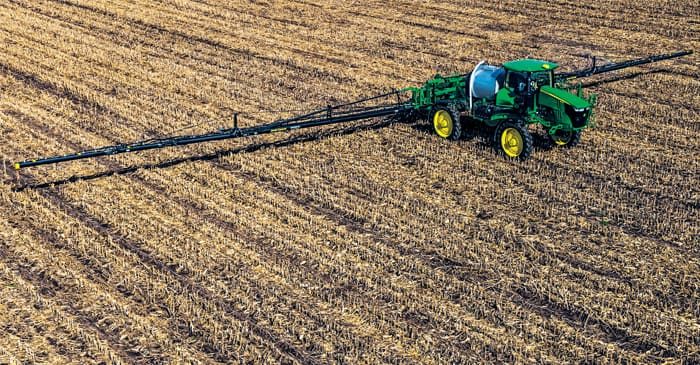The public comment on the U.S. Environmental Protection Agency's (EPA) reconsideration of atrazine has been quiet thus far.
Since the public comment docket was reopened for the reconsideration on June 30, only three comments have been submitted to the EPA, according to the document. Two were anonymous. One was by Bob Pogatchnik, though it wasn't clear from the comments what his connection to agriculture was.
"We need atrazine available for farmers to use without unwarranted restrictions," he writes. "Weed control will be important in the future as some weed species are resistant. Loss of yield due to weed pressure may cause worldwide shortages."
One sign of atrazine's significance to corn growers and no-tillers in the Midwest is found in the roughly 1,500 comments previously submitted when atrazine was reviewed in 2016.
For example, Mike Gall of Ohio wrote in 2016 that his 3,000 no-till and min-till cash crop and seed soybean production farm would face intense pressure if atrazine were eliminated. Gall cash rents all of his land, and says some of the lease agreements date back generations.
"Atrazine is a critical part of soil applied herbicide broad leaf weed control on our no-till corn acres," he wrote. "On our farm the use of tillage to remove weeds has been replaced by the no-till planter with the utilization of an early burn down program that is coupled with the effective residual broad leaf control properties of Atrazine. This avoids the use of a non prescriptive one-size-fits all weed control program of the past, that applies the same chemistry to every acre, where in part, the application of unwarranted chemistry on non-existent weeds at proper application labeled rates was causing a partial over use of multiple products."
The EPA sought the latest review after an environmental group challenged the interim decision in federal courts. The court granted the EPA time to review the repercussion.
The EPA regulates agricultural chemicals on authority from the Federal Insecticide, Fungicide and Rodenticide Act (FIFRA).
The EPA's decision to review atrazine is based on something called the Level of Concern (LOC), a fixed number between 0 and 1. To determine whether regulation is required, regulators compare the LOC to a ratio generated by dividing the environmental exposure amount resulting from an application by EC50, a point halfway between the minimum threshold for a chemical to be measured and the maximum effect. That ratio is called the Risk Quotient (RQ).
For aquatic plants, the RQ for atrazine exposure at 3.4 parts per billion is 1.0, which matches the LOC threshold for the EPA to take action, according to the memo.
However, some industry scientists have challenged this approach, like Richard Brain, an ecotoxicologist with Syngenta.
"The LOC itself is tenuous and based on scientifically indefensible analyses," he tells No-Till Farmer. "These mitigations potentially affect 20 to 45 million acres of corn, primarily in the Midwestern U.S. and are likely to be detrimental to no-till practices."
Trade groups, like the National Corn Growers Association, have also been critical of the consideration.
The EPA's Scientific Advisory Panel and Ecological Committee On FIFRA Risk Assessment Methods have urged the agency to adopt an approached based on probability, which would result in a range of values for the LOC, as opposed to a single fixed value.
The EPA is considering the following restrictions for watersheds that might meet or exceed the much lower 3.4 micrograms/liter threshold:
- banning atrazine use when soils are saturated or above field capacity
- banning atrazine use during storms, and 48 hours before any severe weather is forecast
- banning aerial application of atrazine
- limiting the application of atrazine to 2 lbs of active ingredient per acre per year.
In addition, the EPA is seeking to require record keeping for applications of atrazine, including the name and certification of the applicator, product name and registration number, crop, location, size and area of application, and other data.
A picklist of mitigation measures means farmers would have to select from among various options in the watershed where atrazine has been identified as an area of concern. If more atrazine than certain thresholds was applied, growers would have to choose from various mitigation efforts.
The proposed "picklist" includes:
- No pre-emergence applications on crops
- Vegetative filter strips at least 30 feet wide on A and B hydrologic group soils
- Vegetative filter strips at least 100 feet wide on C and D hydrologic group soils
- Grassed waterway
- Field border
- Irrigation water management
- Cover Crop
- Contour buffer strips
- Contour farming
- Terrace farming
- Strip cropping
- Soil incorporation up to 1 inch
- No tillage or reduced tillage.
Comments will be taken until Sept. 6. Online comments will be opened for the docket upon publication in the federal register, according to the EPA.








Post a comment
Report Abusive Comment